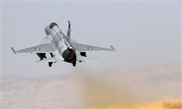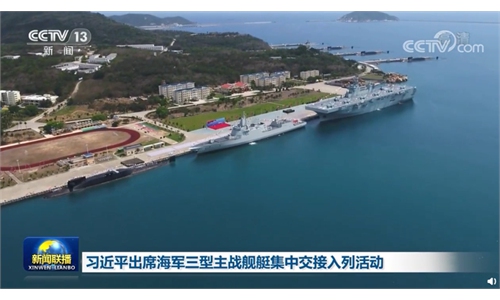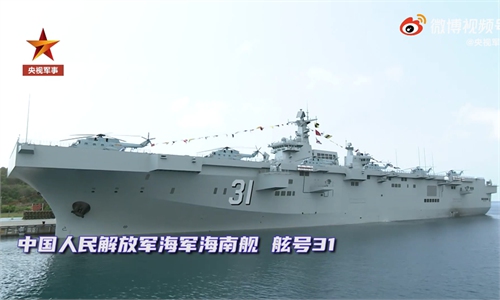China's 2nd aircraft carrier group holds 1st drill in 2021 in S.China Sea, 'training for combat preparedness'

The picture shows aircraft carrier Shandong berths at a naval port in Sanya. China's first domestically-made aircraft carrier Shandong (Hull 17) was officially commissioned to the PLA Navy at a military port in Sanya, South China's Hainan Province, on the afternoon of December 17, 2019, making China one of the few countries in the world that have multiple carriers. Photo:China Military
An aircraft carrier group led by China's second aircraft carrier, the Shandong, is conducting a series of exercises in the South China Sea in its first known voyage of the year, almost immediately after the country's first carrier, the Liaoning, left the region, and Chinese analysts said on Sunday that the move highlighted the fact that the two aircraft carriers that China currently operates are actively training for combat preparedness.
The Chinese People's Liberation Army (PLA) Navy recently organized the Shandong aircraft carrier group for exercises in waters in the South China Sea, Senior Captain Gao Xiucheng, a spokesperson from the PLA Navy, said in a statement on Sunday.
The drill is a regular series of exercises organized based on the annual work schedule, and is fully legitimate and legal, Gao said, noting that it will contribute to boosting the service's capability to safeguard China's sovereignty, security and development interests as well as regional peace and stability.
"We hope the outside world can view [the Shandong's exercise] objectively and rationally. The PLA Navy will continue to organize similar exercises according to the plan regularly in the future," Gao said.
This is the first time the Shandong has embarked on exercises made aware to the general public in 2021, observers said.
As China's second aircraft carrier which entered service in December 2019 and underwent further trials and training sessions in 2020, the Shandong is gaining furtherly enhanced combat capability, a Beijing-based military expert told the Global Times on Sunday, requesting anonymity.
The spokesperson said that the Shandong is in a group, and this means the aircraft carrier could practice coordinating with other vessels including destroyers and frigates like in real combat, instead of acting alone and testing its own technical parameters like during trial phases, the expert said.
Gao did not announce which ships other than the Shandong are included in the group.
Analysts pointed out that the Shandong's latest exercises come immediately after the end of exercises by another Chinese aircraft carrier, the Liaoning, also in the South China Sea.
The Liaoning carrier group recently conducted routine drills and training in waters around Taiwan and related waters in the South China Sea, Senior Colonel Wu Qian, a spokesperson at China's Ministry of National Defense, said at a regular press conference on Thursday.
According to Japan's Ministry of Defense Joint Staff, the Liaoning left the region as it had returned to the East China Sea on April 26 via the Miyako Strait.
Having two aircraft carriers means the PLA Navy can deploy these large warships more often, according to the anonymous expert, who noted that when one undergoes maintenance, the other can take its place.
The recent, consecutive exercises by the Liaoning and the Shandong show that China's aircraft carriers are actively training for combat preparedness in order to deal with any potential threat the country is facing, analysts said.
"China's aircraft carriers are not 'homebodies,' and long distance voyages are bound to become norm," Wu said.




